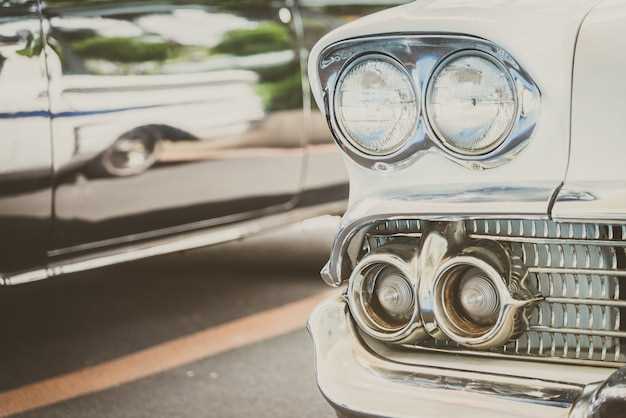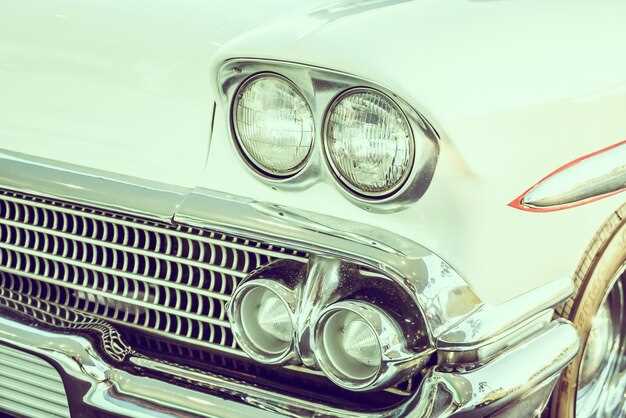Cost Breakdown of a Full Classic Car Restoration

Restoring a classic car can be an exhilarating yet daunting project, drawing enthusiasts into the intricate world of automotive history. The allure of these vintage vehicles often overshadows the complexities involved in the restoration process, particularly when it comes to financial planning. Understanding the detailed breakdown of costs is essential for anyone looking to embark on this rewarding journey.
Creating a realistic budget is the first step toward a successful restoration. Costs can vary significantly based on factors such as the make and model of the car, the extent of the required work, and the desired level of craftsmanship. From bodywork to engine refurbishment, each component of the restoration process comes with its specific expense that can quickly add up if not meticulously accounted for.
As you delve into the various stages of a classic car restoration, you’ll find that expenses can be categorized into several key areas: acquisition, parts, labor, and unexpected contingencies. By breaking down each of these costs, you will gain not only clarity but also confidence in managing your budget. Ultimately, a well-planned financial approach can transform the complexities of restoration into a fulfilling and successful project.
Estimating the Purchase Price of a Classic Car

When entering the world of classic car restoration, accurately estimating the purchase price of a vehicle is crucial for setting a realistic budget. Several factors contribute to the price, including the make, model, age, and condition of the car. Researching different options can help identify typical price ranges for various classic cars, providing a foundation for budgeting.
Condition is one of the most significant aspects to consider. A vehicle in excellent shape will command a higher price than one that requires extensive restoration. Assessing the level of required repairs can prevent overspending. Detailed inspections by experts can reveal hidden issues that may not be apparent at first glance, impacting both the initial purchase price and subsequent restoration costs.
Another factor influencing the price is the rarity and desirability of the classic car. Limited production models or vehicles with historical significance may be priced higher due to demand. Enthusiasts often pay a premium for cars that have unique features or a rich backstory. Market trends also play a role; prices of certain models may fluctuate based on popularity spikes, which can affect overall budgeting.
It is wise to factor in additional expenses beyond the purchase price. Expecting to incur costs for shipping, taxes, and potential restoration work is essential for a comprehensive budget. Additionally, verify if the car requires specific parts that may be hard to find or expensive, which can inflate overall restoration costs significantly.
In summary, estimating the purchase price of a classic car involves careful evaluation of multiple factors. By researching models, assessing conditions, and considering potential additional costs, you can establish a realistic budget that aligns with your restoration goals.
Materials and Parts Expenses in Restoration Projects

Restoring a classic car involves a thorough understanding of materials and parts expenses. Careful budgeting is crucial, as costs can vary significantly based on the vehicle’s condition and the desired quality of restoration.
The first category of expense is bodywork materials. This includes metal sheets for repairs, primers, paints, and sealants. Quality materials can enhance the vehicle’s appearance and durability, impacting the overall budget significantly. Using subpar materials may result in additional costs down the line due to the need for rework.
Next, consider mechanical parts. Key components such as engines, transmissions, and suspension systems often require replacement or refurbishment. Finding original or OEM parts can drive up costs, but these choices often ensure better integration and performance, which is essential for any classic car restoration.
Another important factor is interior materials, including upholstery, dashboards, and carpeting. The choice of materials can affect both the authenticity of the restoration and the overall budget. High-quality, period-correct materials can enhance the vehicle’s value but may require a larger financial commitment.
Also, don’t overlook consumables like adhesives, lubricants, and cleaning supplies. While these may seem minor in comparison, they can accumulate into a significant portion of the total cost. A precise budget should account for these items to avoid unexpected financial strain during the restoration process.
Ultimately, a comprehensive analysis of materials and parts expenses is essential in restoration projects. Planning and sourcing the right components will not only help keep your budget on track but also ensure a successful and rewarding restoration outcome.
Labor Costs and Professional Services for Restoration
The labor costs associated with classic car restoration can significantly impact your overall budget. Hiring skilled professionals can ensure that every aspect of the restoration process is handled with expertise and care. Mechanics, bodywork specialists, and upholstery experts may be required at various stages, each bringing specialized knowledge that contributes to the quality of the final product.
Typically, labor rates can vary based on geographic location, the complexity of the work, and the reputation of the service provider. For instance, a well-established workshop in a metropolitan area might charge higher fees compared to a smaller shop in a rural location. Therefore, it is essential to conduct thorough research and obtain multiple estimates to find a service that aligns with your budget while still meeting quality expectations.
In addition to general labor, you might find it necessary to employ professionals for specific tasks, such as engine rebuilding, paint restoration, or electrical system upgrades. Each of these specialized services may come at a different rate, and understanding these costs can help you allocate your budget more effectively.
Furthermore, it’s advisable to factor in the time it may take for restoration. High-quality work often requires patience, and lengthy restoration projects can lead to increased labor costs. Being realistic about timelines and budgets will help avoid unexpected financial burdens during the restoration process.
Ultimately, investing in professional services will generally yield a better end result for your classic car restoration. Sometimes, corners should not be cut when it comes to quality; the proper level of expertise can make a significant difference in both aesthetics and functionality. Therefore, allocating a reasonable portion of your budget toward labor and professional services is a crucial step in achieving your restoration goals.



